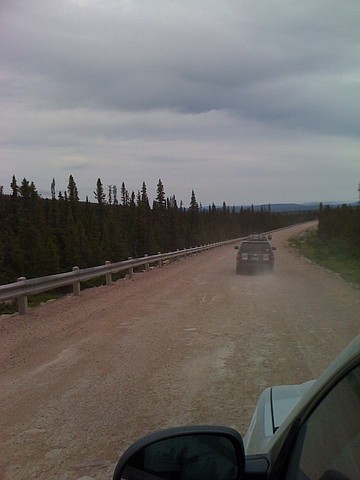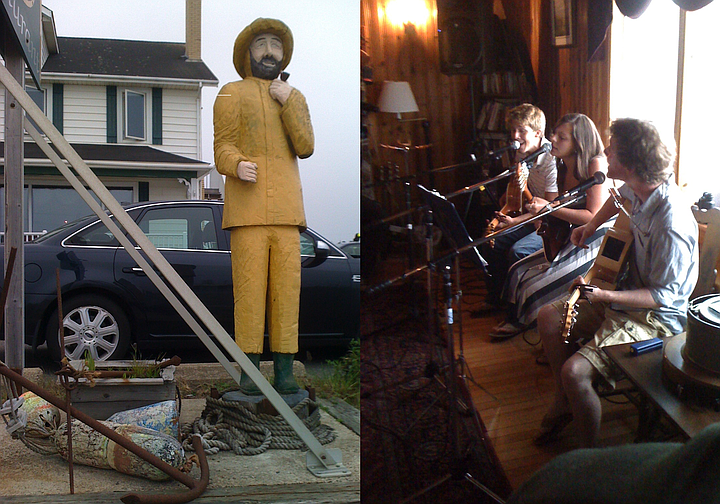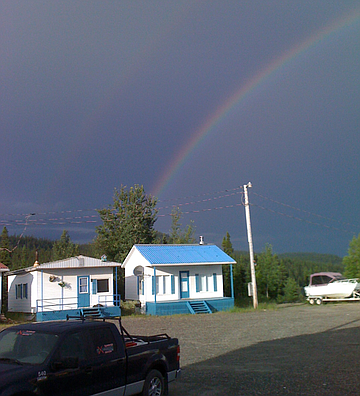 Facebook
Facebook
 X
X
 Instagram
Instagram
 TikTok
TikTok
 Youtube
Youtube

Generally, I travel alone. I like to explore at my own pace and in my own time. I'm not big on planning, either. I leave myself space to explore a different direction or seize an opportunity if one should present itself.
But the invitation to travel with a dozen journalists over 5,000 miles through Canadian wilderness so rugged I wasn't sure how we'd fare held great appeal.

The ultimate goal: the Trans-Labrador Highway – two members of our group on motorcycle – by way of the eastern coast of the United States and Canada before returning home to Pittsburgh through the interior. Five thousand miles in three weeks. The peak of black fly season. Tents and tarps. Wild animals and wilderness. Sign me up!
With a trip over so many miles and already completely mapped out, I wondered how off the beaten path I'd be able to get in order to find the maritime Canada that no one else had seen.
I'd never made the journey this far north into Eastern Canada, and with province after province opening up green isles, extraordinary rose gardens and quaint fishing villages, I felt like Ireland was just around the corner.
Nova Scotia is a vacation paradise. A green, hilly interior, sandy coastlines and friendly folks, this small province is full of museums, gardens, wineries, and a fort - Fort Edward National Historic Site. I took a run along a beach early one morning hurdling hundreds of jellyfish that had washed ashore. It was a sight to behold. The icy water proved a refreshing dip afterward.
Newfoundland, small and accessible only by ferry, is lush and beautiful beyond exception. The rolling hills' flower cover is thick over every unpaved inch, and surrounding frigid Gulf of St. Lawrence waters hold hidden icebergs! Misty sprays cover slopes that dive into tiny fishing villages to create an otherworldly escape. Castles sit precariously along cliffs that hang on every wave as lighthouses beg for attention. This is the most beautiful place I've ever seen.
A desolate difference from that island's gorgeous green is the no man's land known as Labrador and the (nearly) single – at the time of my travel – unfinished highway running from Blanc-Sablon through Labrador to Baie Comeau, Quebec.
Traveled mostly by truckers carrying a load and adventure motorcyclists who dare face black fly swarms and flat tire after flat tire, this hundreds-mile long stretch is not for the light-hearted day traveler. There are no filling stations, no rest stops, no convenience stores. In fact, I am not sure the word "convenient" exists in this neck of the woods. The few-and-far-between more inhabited cities along this route seem deserted themselves, even though they bustle with indigenous people, military members and travelers. This portion of the drive is one I'm happy to have taken but don't anticipate driving again.

Once inside French Canada, and back in civilization, I had to remember the shape and color of road signs, as my French is severely lacking. But the roads traveled are filled with hidden gems like a small restaurant with a large fisherman statue welcoming us inside to a band playing French folk songs (left).
After I'd had my fill of poutine, I strolled across the street to enjoy the setting sun along the St. Lawrence River. Quebec City and Montreal are lovely cities with much more to offer than any day trip could serve.

The terrain over this three-week journey varied immensely and held surprises at every turn. Even one portion of this trek is worth any traveler's tour.
And who doesn't love a double rainbow?


Generally, I travel alone. I like to explore at my own pace and in my own time. I'm not big on planning, either. I leave myself space to explore a different direction or seize an opportunity if one should present itself.
But the invitation to travel with a dozen journalists over 5,000 miles through Canadian wilderness so rugged I wasn't sure how we'd fare held great appeal.

The ultimate goal: the Trans-Labrador Highway – two members of our group on motorcycle – by way of the eastern coast of the United States and Canada before returning home to Pittsburgh through the interior. Five thousand miles in three weeks. The peak of black fly season. Tents and tarps. Wild animals and wilderness. Sign me up!
With a trip over so many miles and already completely mapped out, I wondered how off the beaten path I'd be able to get in order to find the maritime Canada that no one else had seen.
I'd never made the journey this far north into Eastern Canada, and with province after province opening up green isles, extraordinary rose gardens and quaint fishing villages, I felt like Ireland was just around the corner.
Nova Scotia is a vacation paradise. A green, hilly interior, sandy coastlines and friendly folks, this small province is full of museums, gardens, wineries, and a fort - Fort Edward National Historic Site. I took a run along a beach early one morning hurdling hundreds of jellyfish that had washed ashore. It was a sight to behold. The icy water proved a refreshing dip afterward.
Newfoundland, small and accessible only by ferry, is lush and beautiful beyond exception. The rolling hills' flower cover is thick over every unpaved inch, and surrounding frigid Gulf of St. Lawrence waters hold hidden icebergs! Misty sprays cover slopes that dive into tiny fishing villages to create an otherworldly escape. Castles sit precariously along cliffs that hang on every wave as lighthouses beg for attention. This is the most beautiful place I've ever seen.
A desolate difference from that island's gorgeous green is the no man's land known as Labrador and the (nearly) single – at the time of my travel – unfinished highway running from Blanc-Sablon through Labrador to Baie Comeau, Quebec.
Traveled mostly by truckers carrying a load and adventure motorcyclists who dare face black fly swarms and flat tire after flat tire, this hundreds-mile long stretch is not for the light-hearted day traveler. There are no filling stations, no rest stops, no convenience stores. In fact, I am not sure the word "convenient" exists in this neck of the woods. The few-and-far-between more inhabited cities along this route seem deserted themselves, even though they bustle with indigenous people, military members and travelers. This portion of the drive is one I'm happy to have taken but don't anticipate driving again.

Once inside French Canada, and back in civilization, I had to remember the shape and color of road signs, as my French is severely lacking. But the roads traveled are filled with hidden gems like a small restaurant with a large fisherman statue welcoming us inside to a band playing French folk songs (left).
After I'd had my fill of poutine, I strolled across the street to enjoy the setting sun along the St. Lawrence River. Quebec City and Montreal are lovely cities with much more to offer than any day trip could serve.

The terrain over this three-week journey varied immensely and held surprises at every turn. Even one portion of this trek is worth any traveler's tour.
And who doesn't love a double rainbow?
Comments